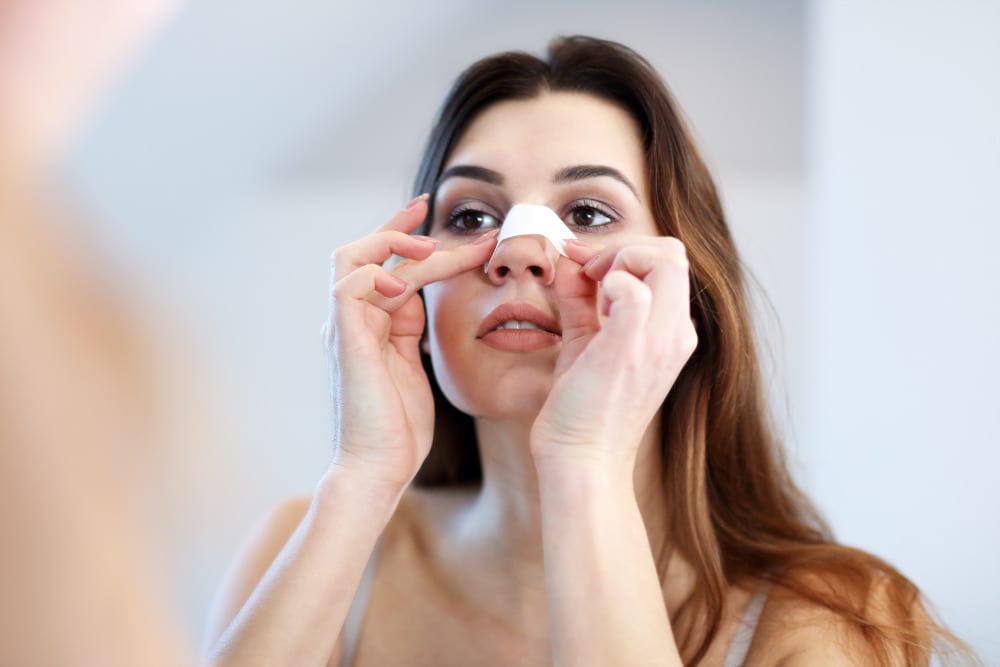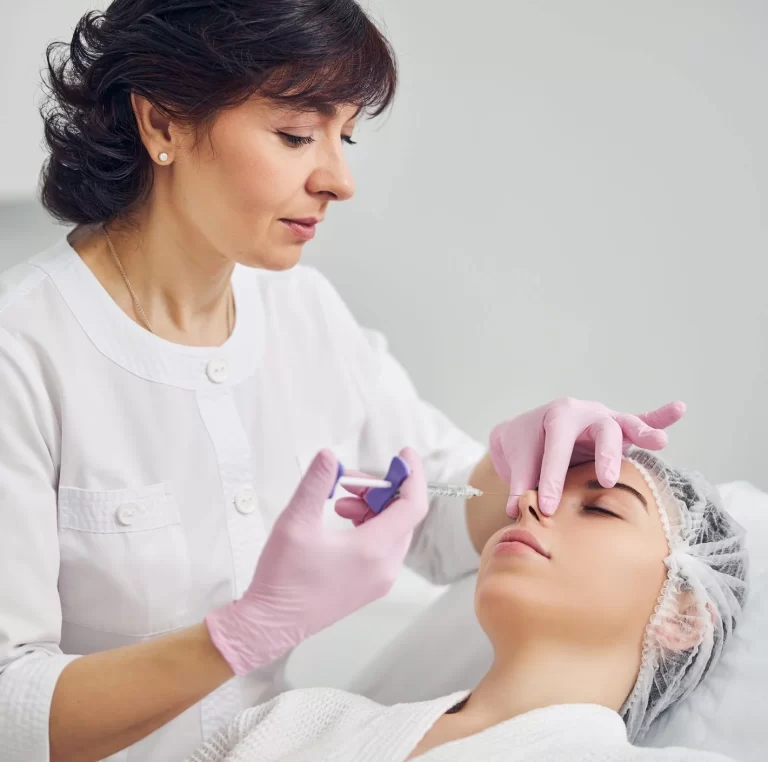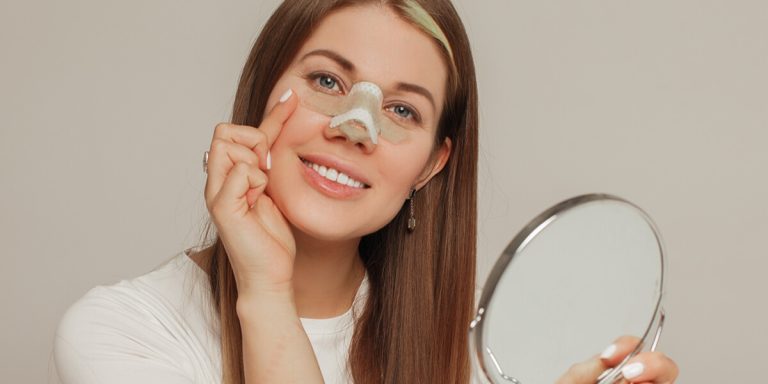
Non Surgical Rhinoplasty
The Rise of Non-Surgical Rhinoplasty: Transforming Noses Without Surgery
As the demand for aesthetic enhancements continues to grow, the field of non-surgical rhinoplasty has emerged as a game-changer in the world of facial rejuvenation. This innovative approach to nose reshaping offers a minimally invasive alternative to traditional surgical rhinoplasty, allowing individuals to achieve their desired look without the extensive downtime and risks associated with a surgical procedure.
Understanding Non-Surgical Rhinoplasty
Non-surgical rhinoplasty, also known as a “liquid nose job,” is a cosmetic treatment that utilizes dermal fillers to reshape and refine the appearance of the nose. Instead of undergoing invasive surgery, patients can now opt for this injectable-based solution to address a wide range of aesthetic concerns, from bumps and depressions to asymmetry and tip refinement.
The procedure involves the strategic injection of hyaluronic acid-based fillers into targeted areas of the nose. These fillers work by adding volume and enhancing the nose’s contours, creating a more balanced and harmonious appearance. The treatment is performed by experienced, board-certified providers, who meticulously plan and execute the injections to achieve the desired results.
One of the primary advantages of non-surgical rhinoplasty is its minimally invasive nature. Compared to traditional rhinoplasty, which requires general anesthesia and a lengthy recovery period, this approach is a quick, in-office procedure with little to no downtime for the patient. This makes it an attractive option for those who desire subtle improvements without the commitment of a surgical intervention.
Addressing Aesthetic Concerns
Non-surgical rhinoplasty offers a versatile solution for a wide range of aesthetic concerns related to the nose. Individuals with a prominent nasal hump or bump can undergo the treatment to smooth and refine the bridge of the nose, creating a more streamlined profile.
For those with a depressed or sunken nasal tip, the strategic placement of fillers can lift and enhance the appearance, resulting in a more defined and harmonious nose shape. Patients with asymmetrical or crooked noses can also benefit from non-surgical rhinoplasty, as the fillers can be used to balance and correct these irregularities.
In addition to addressing structural issues, non-surgical rhinoplasty can also be employed to refine the overall proportions of the nose. By enhancing specific areas, such as the nasal tip or nostrils, providers can help to create a more aesthetically pleasing and harmonious facial balance.
One of the key advantages of this approach is its ability to achieve subtle, natural-looking results. Unlike surgical rhinoplasty, which can sometimes lead to an overly “done” or unnatural appearance, non-surgical treatments allow for a more gradual, incremental transformation that seamlessly integrates with the patient’s existing facial features.
The Reversibility Factor
Another significant benefit of non-surgical rhinoplasty is its reversibility. Unlike surgical procedures, where the changes are permanent, the effects of dermal fillers can be readily reversed if the patient is dissatisfied with the results or desires a different look.
This reversibility factor provides patients with a greater sense of control and flexibility over their aesthetic goals. If the initial treatment doesn’t achieve the desired outcome or the patient’s preferences change over time, the fillers can be dissolved, allowing the nose to return to its original state.
This level of customization and adaptability is particularly appealing to those who are hesitant to commit to a permanent surgical alteration or who wish to explore various options before deciding on a long-term solution.
The Importance of Expertise
While non-surgical rhinoplasty is a less invasive procedure compared to traditional surgical methods, it still requires a high level of expertise and skill from the provider performing the injections. Proper technique and an in-depth understanding of facial anatomy are essential to ensuring safe, natural-looking results.
Patients should always seek out a board-certified plastic surgeon, dermatologist, or other experienced healthcare provider who specializes in non-surgical rhinoplasty. These professionals have undergone extensive training and have a proven track record of delivering successful outcomes for their clients.
During the consultation process, it is crucial for patients to have an open and honest dialogue with their provider. Discussing their aesthetic goals, addressing any concerns, and collaborating on a customized treatment plan can help ensure that the final results align with the patient’s vision.

The Future of Non-Surgical Rhinoplasty
As the demand for non-invasive aesthetic treatments continues to rise, the field of non-surgical rhinoplasty is poised for continued growth and innovation. Advancements in filler materials, injection techniques, and provider expertise are likely to further enhance the safety, predictability, and versatility of this transformative procedure.
Moreover, the increasing accessibility and popularity of non-surgical rhinoplasty may make it a more widely adopted option for individuals seeking subtle, natural-looking improvements to their facial appearance. This could help to democratize the pursuit of aesthetic enhancement, empowering a broader range of patients to explore their options and achieve their desired look.
Ultimately, non-surgical rhinoplasty represents a remarkable evolution in the field of facial rejuvenation. By providing a minimally invasive, reversible alternative to traditional surgical techniques, this innovative approach has the power to transform lives and boost self-confidence without the extensive commitment and recovery associated with a surgical procedure.

Conclusion
Non-surgical rhinoplasty offers an effective and less invasive alternative to traditional surgical nose reshaping procedures. Through the use of dermal fillers, a skilled aesthetic practitioner can address nasal imperfections such as bumps, asymmetry, or a drooping tip, often providing immediate, noticeable results with minimal downtime. Non-surgical rhinoplastys is suitable for individuals seeking temporary enhancements and improvements, and can be tailored to their specific aesthetic goals. The procedure’s non-permanent nature allows for adjustments and reversibility. However, it’s essential to consult with a qualified and experienced practitioner specialized in non-surgical rhinoplastys to ensure safety, proper technique, and realistic expectations.
Unlike surgical rhinoplastys, the non-surgical approach requires periodic maintenance to retain the results, as dermal fillers gradually diminish over time. While non-surgical rhinoplastys may not be suitable for all nasal concerns, it can provide a viable option for individuals seeking subtle changes without the commitment and recovery associated with traditional surgery. Overall, non-surgical rhinoplastys offers a minimally invasive way to achieve subtle nasal enhancements, delivering a more balanced and harmonious appearance with immediate, satisfying results.



